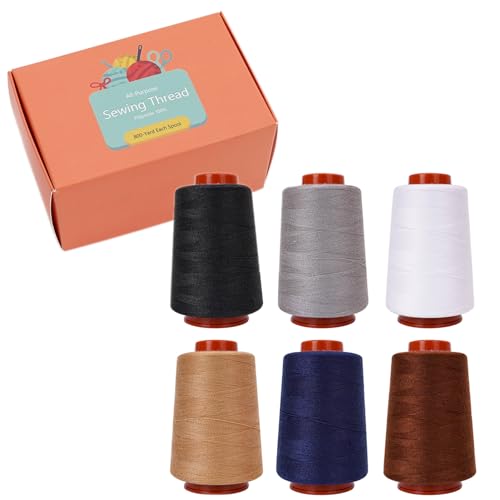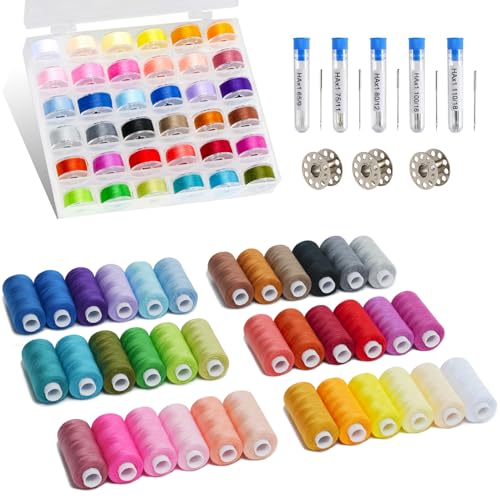Are you wondering if your sewing thread is past its prime? It’s important to know if your thread is old as it can affect the quality and durability of your sewing projects. In this article, we’ll share some tips on how to tell if your sewing thread is old and needs to be replaced. By knowing the signs, you can ensure that your sewing projects turn out beautifully every time.
When it comes to sewing, using the right materials is key. If your thread is old, it may not be as strong as it once was. This can lead to thread breakage and weak seams, causing frustration and disappointment in your sewing projects. By learning how to identify old sewing thread, you can save yourself time and effort by using fresh thread that will give you the best results.
So, how can you tell if your sewing thread is old? There are a few telltale signs to look out for. In the next section, we’ll discuss these signs in more detail, helping you determine whether it’s time to retire your old thread and invest in some new spools. Stay tuned to find out how to keep your sewing projects running smoothly with fresh and reliable thread.
What is Sewing Thread?
When it comes to sewing, embroidery, knitting, or any craft that involves thread, it’s important to have the right materials. One key component of any sewing project is the thread itself. But what exactly is sewing thread?
Sewing thread is a thin and flexible strand of yarn or filament that is used to sew fabrics together. It is typically made from various materials such as cotton, polyester, nylon, or silk. Each type of thread has its own unique qualities and is suitable for different types of projects.
Cotton thread, for example, is a popular choice for sewing natural fibers like cotton, linen, and rayon. It is strong and durable, making it ideal for basic stitching and general sewing needs. On the other hand, polyester thread is known for its strength and resistance to color fading, making it a great choice for sewing synthetic fabrics and garments that require frequent washing.
Nylon thread, known for its elasticity and durability, is commonly used for sewing heavyweight fabrics like denim or leather. And for those who want a touch of luxury, silk thread is a great option. Its smooth and lustrous finish adds an elegant touch to delicate fabrics like silk or satin.
Sewing threads come in a variety of thicknesses or weights, which are determined by the thickness of the thread itself. Thicker threads, such as heavy-duty or upholstery threads, are used for sewing thicker fabrics or for projects that require extra strength. Thinner threads, like lightweight or fine threads, are perfect for delicate fabrics or intricate stitching work.
Why Does Sewing Thread Become Old?
As an expert in all things sewing, embroidery, knitting, and crafts in general, you might wonder why sewing thread becomes old and needs to be replaced. Well, let me shed some light on this topic for you.
Exposure to Light and Heat: Over time, sewing thread can become weakened and discolored due to exposure to light and heat. If you store your thread in direct sunlight or in a hot and humid environment, it can cause the fibers to deteriorate. This can result in weak seams and breakage while sewing, making it necessary to replace the thread.
Usage and Friction: Another reason why sewing thread becomes old is regular usage and friction. As you sew, the thread rubs against the fabric, creating friction. This can cause the thread to wear down over time, especially if you frequently sew with heavy or abrasive fabrics. The more you use the thread, the more likely it is to weaken and lose its strength.
Storage Conditions: Proper storage is crucial in maintaining the quality of your sewing thread. If you store your thread in a damp or moldy area, it can cause the thread to become brittle and weak. Likewise, if you store your thread in a place where it is constantly exposed to dust, dirt, or lint, it can affect its overall performance. It’s important to store your thread in a cool, dry place away from direct sunlight and pollutants to prolong its lifespan.
Expiration Date: Believe it or not, sewing thread does have an expiration date. Manufacturers typically recommend using thread within a certain timeframe, usually around two to three years, to ensure its optimal performance. Beyond this timeframe, the thread can become weak and brittle, leading to unsatisfactory sewing results.
Signs that Sewing Thread is Old
When it comes to sewing, embroidery, knitting, or any other craft projects, using the right materials is crucial for your success. One often overlooked component is the quality of your sewing thread. Over time, thread can become weakened and lose its integrity, leading to frustrating issues like breakage, weak seams, and even ruined projects. So, how can you tell if your sewing thread is old and needs to be replaced? Here are some signs to look out for:

1. Weakness
If you notice that your thread is easily breaking or fraying, it might be a sign that it’s past its prime. As thread gets older, it can become more fragile and prone to snapping under tension. This can result in frustrating interruptions and a less reliable finished product.
2. Discoloration
Take a close look at the color of your thread. If you notice any discoloration, such as fading or yellowing, it’s a sign that the thread has been exposed to light and possibly heat for a prolonged period. Over time, the exposure to these elements can cause the thread to weaken, affecting its overall strength.
3. Texture
A smooth texture is important for proper stitching. If your thread feels rough or “fuzzy” to the touch, it’s a clear indication of a deteriorating quality. As thread ages, it can become more brittle and lose its smoothness, resulting in uneven stitches and potential thread breakage.
4. Expiration Date
Yes, even thread has an expiration date! Some manufacturers label their thread spools with a recommended usage timeframe. If your thread has passed its expiration date, it’s best to err on the side of caution and replace it with a fresh spool. Using thread past its expiration date can lead to disappointing results.
Testing the Strength of Sewing Thread
When it comes to sewing, the strength of your thread is crucial for the longevity and durability of your projects. Using old, weak thread can result in broken seams and frustrating mishaps. So, how can you determine if your sewing thread is still strong enough? Let’s dive into some simple tests you can do:
« Discover the Perfect Height: Transform Your Sewing Experience with the Right Table Setup
Unlock the Secret to Teaching Sewing to Six-Year-Olds – You Won’t Believe the Results »
1. Tension Test: Take a piece of thread and hold it tight between your hands. Give it a gentle tug. If the thread breaks easily or feels weak, it’s a sign that it may have lost its strength over time. Strong thread should be able to withstand some tension without snapping.
2. Pull Test: Cut a small length of thread and hold it between your fingers. Apply a gradual, increasing amount of force by pulling the thread in opposite directions. If the thread stretches too much or breaks easily, it’s an indication of weakened fibers. Fresh thread should have good elasticity and be able to withstand moderate pulling.
3. Knot Test: Tie a simple knot in a piece of thread, making sure it’s tightly secured. Gently tug on the knot to see if the thread holds up. If the thread easily slips out of the knot or breaks, it’s a sign of weakness. Reliable thread should be able to maintain its strength even when tied tightly.
4. Friction Test: Rub a small section of the thread between your fingers for a few seconds. If the thread starts to fray or develop loose fibers, it may be too weak to withstand regular usage. Strong thread should have a smooth and intact texture, even after some friction.
By performing these simple tests, you can quickly evaluate the strength and quality of your sewing thread. Remember, using strong and reliable thread is essential for successful sewing projects. If you notice any signs of weakness or deterioration, it’s time to replace your thread with fresh, high-quality options. Happy sewing!
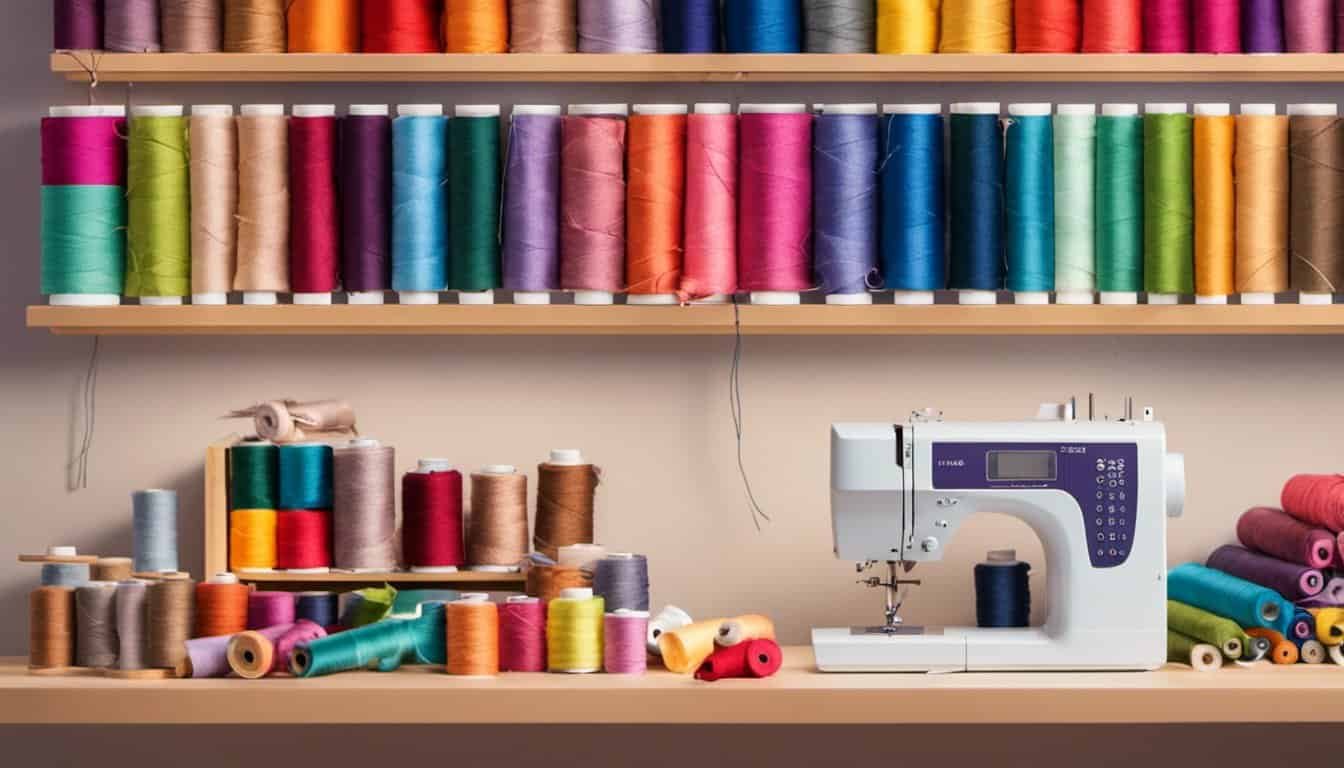
Next, let’s explore the impact of discoloration on thread quality.
How to Properly Store Sewing Thread
Proper storage is essential in maintaining the quality and longevity of your sewing thread. By taking the time to store your thread correctly, you can prevent it from becoming weak, discolored, or otherwise compromised. Here are some tips on how to properly store your sewing thread:
1. Keep it away from direct sunlight and heat: Exposure to sunlight and heat can cause fading and weakening of the thread. Store your thread in a cool, dry place away from windows and sources of heat, such as radiators and heaters.
2. Store in airtight containers: Dust, dirt, and humidity can also affect the quality of your sewing thread. To keep your thread clean and free from moisture, store it in airtight containers such as plastic bags or thread organizers. This will help preserve its color and strength.
3. Avoid storing near magnets: Magnets can affect the tension of your thread. Avoid placing your thread near magnets or magnetic surfaces as it can cause the thread to become tangled or damaged.
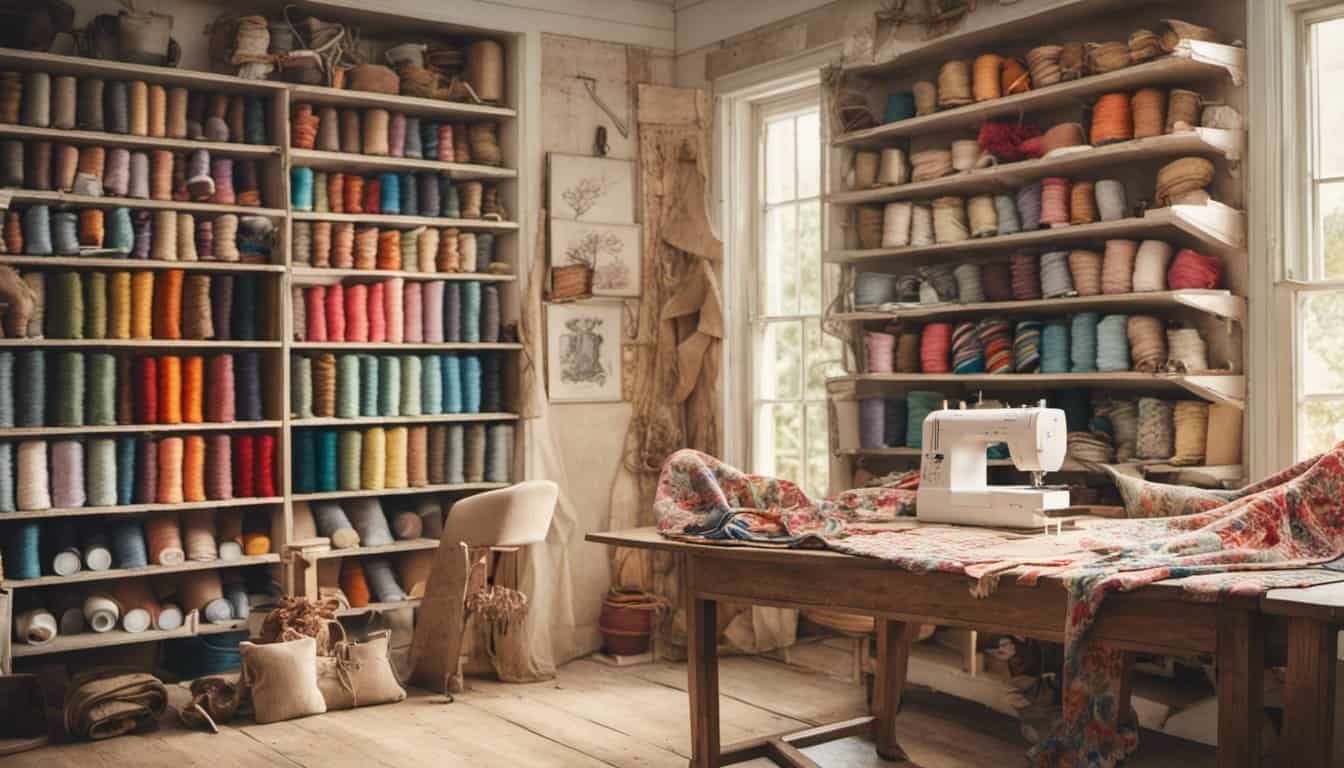
4. Organize by color and type: To maximize efficiency and make it easier to find the thread you need, organize your thread by color and type. Invest in a thread organizer or use a storage system with clear compartments so you can easily see and access your thread collection.
5. Use thread spool caps: If you use large spools of thread that don’t fit into your sewing machine, make sure to use spool caps to secure the thread and prevent it from unraveling. This will not only keep your thread tidy but also help maintain its quality.
Following these simple storage tips will help ensure that your sewing thread remains in optimal condition. By properly storing your thread, you’ll have a reliable supply that produces strong and beautiful stitches for all your sewing projects.
Remember, when it comes to sewing, investing in good quality thread and taking care of it will result in better outcomes and less frustration along the way. So take the time to store your thread properly, and enjoy the pleasure of sewing with high-quality threads for years to come.
Conclusion
By following the tips and tests outlined in this article, you can easily determine if your sewing thread is old and needs to be replaced. Remember that sewing thread can weaken and become discolored over time due to exposure to light, heat, and regular use. It is important to store your thread properly to maintain its quality and longevity.
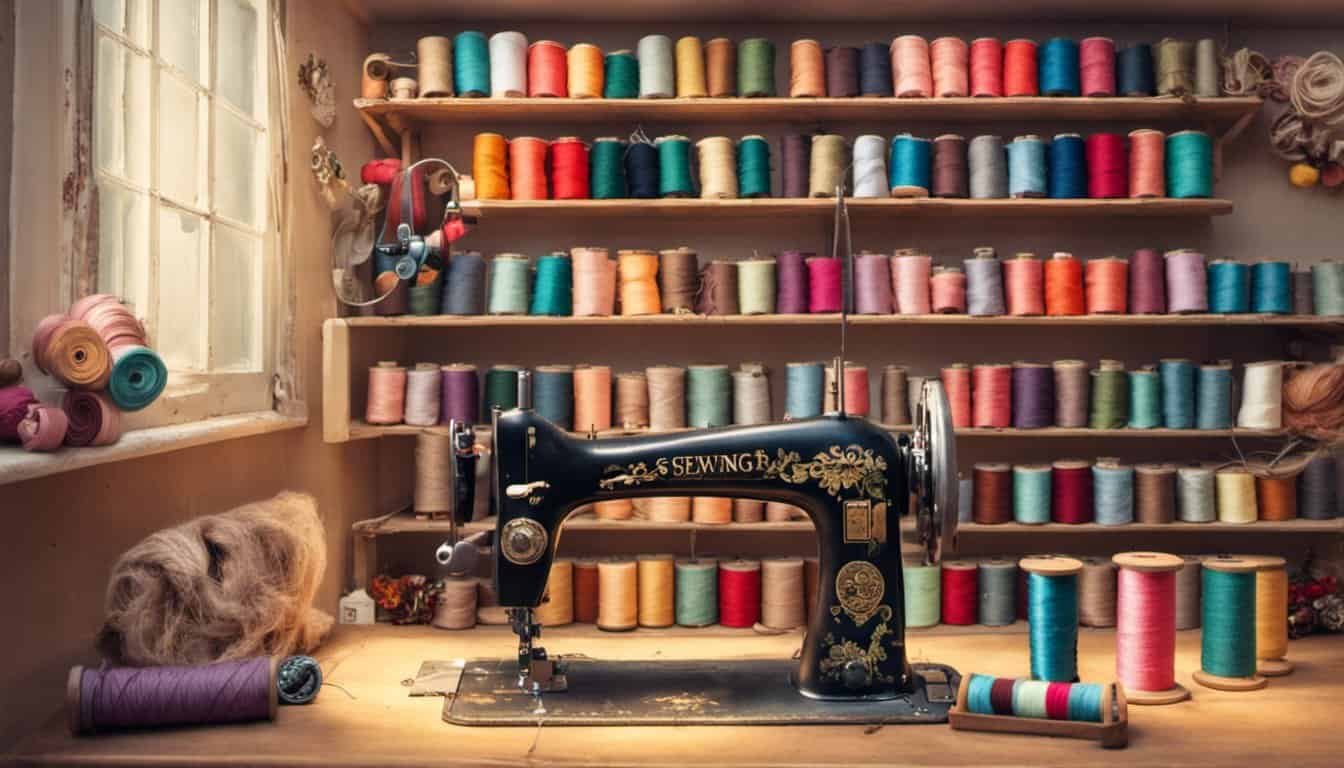
Using old thread can result in weak seams and thread breakage, which can be frustrating during your sewing projects. By performing the tension test, pull test, knot test, and friction test, you can quickly evaluate the strength and quality of your thread.
If you notice any signs of weakness or deterioration, it’s time to replace your thread with fresh, high-quality options. Additionally, proper storage is essential in maintaining the quality of your thread. Keep it away from direct sunlight and heat, store it in airtight containers, avoid magnets, and organize it by color and type.
By following these guidelines, you can ensure that your sewing thread remains in optimal condition, allowing you to create strong and beautiful stitches for all your sewing projects. Happy sewing!


